Biliary Duct Cancer (BDC): Diverse Therapeutic Approaches- Market Insight, Clinical trial, Product Analysis, Patent Analysis, Competitive Analysis and Market Forecast – 2023-2033
Cholangiocarcinoma, also known as Biliary Duct Cancer, is a rare and challenging malignancy originating in the bile ducts, which are slender tubes responsible for transporting bile from the liver and gallbladder to the small intestine. Typically diagnosed at an advanced stage, this cancer presents difficulties in treatment, resulting in a generally poor prognosis. However, recent advancements in targeted therapies and ongoing clinical trials are offering a glimmer of hope for improved outcomes.
The bile duct cancer is categorized based on its location within the biliary system:
Bile duct cancers are further divided based on their microscopic appearance, with the majority being Cholangiocarcinomas, a type of adenocarcinoma originating from gland cells lining the ducts. Other rare types include Sarcomas, Lymphomas, and Small cell cancers.
Recognizing the Signs and symptoms of cholangiocarcinoma is crucial for early detection:
Cholangiocarcinoma arises from DNA changes in bile duct cells, triggering uncontrolled cell growth and the formation of a tumor that invades healthy tissues. Diagnosis involves various tests, including liver function tests, tumor marker tests, imaging studies (ultrasound, CT scans, MRI), and, when necessary, a biopsy.
Treatment approaches for Cholangiocarcinoma encompass:
Clinical trials provide avenues for exploring novel treatments, and supportive (palliative) care complements ongoing therapies, improving the quality of life for patients. Although Cholangiocarcinoma poses significant challenges, advancements in research offer promise for better management and outcomes. Seeking expert opinions and exploring clinical trial options can be pivotal in navigating this complex and rare form of cancer.

Figure 1 Malignant Tumor in the Bile duct
Credits- (https://www.hopkinsmedicine.org/health/conditions-and-diseases/bile-duct-cancer-cholangiocarcinoma)
To obtain a thorough insight into the dynamic landscape of Biliary Duct Cancer research and development, it is imperative to explore the present state of scientific inquiry and the emergence of pioneering treatment strategies. This understanding serves as a vital compass for making informed decisions in the Biliary Duct Cancer therapy domain, guaranteeing strategic choices and the adept integration of treatments within the evolving healthcare landscape for this particular type of cancer.
Market Landscape: Biliary Duct Cancer (BDC): Example Illustration: Distribution by Pipeline Candidates
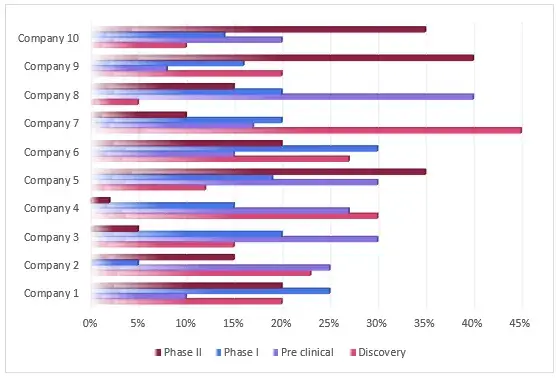
Figure 2 Distribution by Pipeline Candidates
In Biliary Duct Cancer research and market analysis, company profiling is essential. This involves a comprehensive examination of firms in the Biliary Duct Cancer sector, providing insights into their history, product portfolio, financial stability, competitive strategies, and recent accomplishments. This information is valuable for assessing the competitive landscape, identifying collaboration opportunities, and fostering progress and innovation in the field.

Figure 3 Company Profiles
In this report, we will conduct a detailed patent analysis to assess the intellectual property landscape in the Biliary Duct Cancer domain. The analysis aims to reveal significant patents, influential inventors, and emerging technological trends specific to Biliary Duct Cancer. It also offers organizations insights into innovation, competition, and potential opportunities for product improvement or collaboration in the Biliary Duct Cancer field.
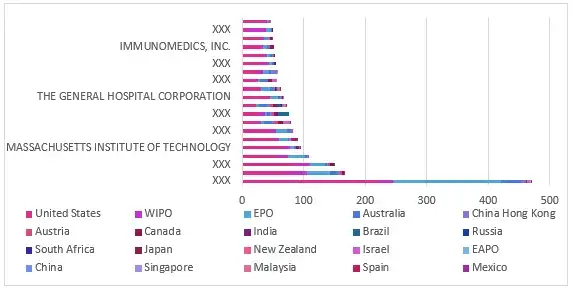
Figure 4 Patent distribution of current assignees
In this market research report for Biliary Duct Cancer, the clinical trial analysis provides a thorough assessment of clinical trials, covering categories, study structures, research methods, and participant characteristics. The primary objective is to evaluate the effectiveness, safety, and outcomes of pharmaceuticals and medical interventions in the context of Biliary Duct Cancer.

Figure 5 Distribution by Key Geographical Areas
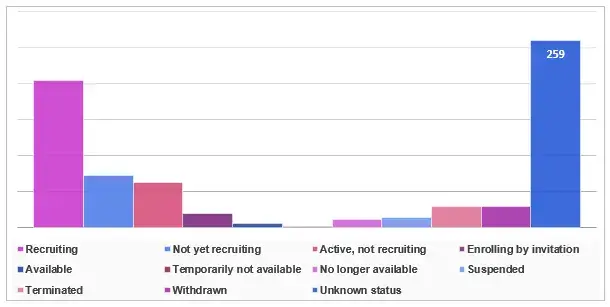
Figure 6 Distribution of Biliary Duct Cancer Drug Clinical Trials by Status
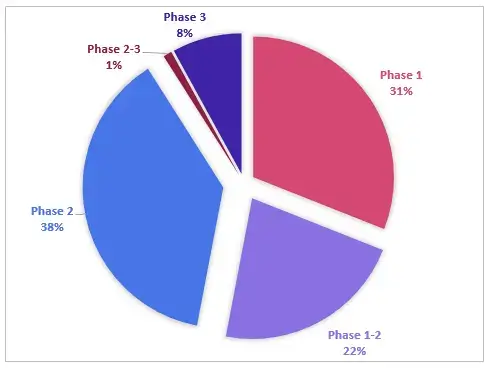
Figure 7 Distribution of Clinical Trials by Phase of Development
In this market research report focused on Biliary Duct Cancer, the market forecast section offers a comprehensive view of forthcoming trends, growth opportunities, and factors influencing supply and demand dynamics. This segment includes quantitative predictions, providing insights into market size, revenue forecasts, and potential growth pathways within the Biliary Duct Cancer domain.
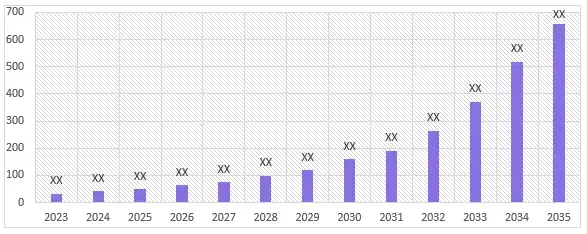
Figure 8 Biliary Duct Cancer: Market, 2023-2033 (USD Million)
(Segmented in terms of the financial growth)
In this market research report centered on Biliary Duct Cancer, the competitive landscape section will offer a succinct overview of major market participants, including their market shares and concise profiles highlighting strengths, weaknesses, and strategic approaches within the Biliary Duct Cancer domain.

Figure 9 Competitive Landscape
In order to give the most precise estimations and forecasts, Wissen Research uses an extensive and iterative research approach that is focused on reducing deviation. The company blends top-down and bottom-up methodologies for market segmentation and quantitative estimation. In addition, data triangulation, which examines the market from three separate angles, is a recurrent topic present in all of our research studies. Important components of the approach used for all of our studies include the following:
Preliminary data mining
On a wide scale, unprocessed market data is collected. Continuous data filtering makes sure that only verified and authenticated sources are taken into account. Additionally, data is extracted from a wide range of reports in our repository and from a number of reputable premium databases. We gather information from raw material suppliers, distributors, and purchasers to help with this since understanding the entire value chain is crucial for a thorough understanding of the market.
Surveys, technical symposia, and trade magazines are used to gather information on technical concerns and trends. Technical information focusing on white space and freedom of movement is also obtained from an intellectual property standpoint. Additionally, information on the industry’s drivers, constraints, and pricing patterns is obtained. As a result, a variety of original data are included in the material that is then cross-validated and certified with published sources.
Statistical model
We use simulation models to generate our market projections and estimates. Every study receives a special model that is tailored to it. Data for market dynamics, the technology environment, application development, and pricing patterns are gathered and supplied into the model all at once for analysis. The relative relevance of these factors is investigated, and their impact on the forecast period is assessed, using correlation, regression, and time series analysis. The process of market forecasting combines technological analysis with economic strategies, practical business acumen, and subject expertise.
Econometric models are frequently used for short-term forecasting, but technology market models are typically employed for long-term forecasting. These are based on a confluence of the business environment, regulatory environment, economic projection, and technical landscape. In order to develop global estimates, it is preferable to estimate markets from the bottom up by integrating data from key regional markets. This is required to ensure accuracy and a complete comprehension of the subject. Among the variables taken into account for forecasting are:
Regulations and anticipated developments
We give these criteria weights and use weighted average analysis to assess their market influence in order to calculate the anticipated market growth rate.
Primary research | Secondary research |
· Manufacturers · Technology distributors and wholesalers · End-user surveys · Consumer surveys | · Company reports and publications · Government publications · Independent investigations · Economic and demographic data · Online searches · Research reviews · Reference customers |
1.1 Definition of Biliary Duct Cancer
1.2 Significance of Biliary Duct Cancer Research and Analysis
1.3 Biliary Duct Cancer Types and Subtypes
1.4 Disease Progression and Staging
1.5 Diagnostic Methods and Biomarkers
2.1 Current Biliary Duct Cancer Treatment Landscape
2.2 Market Trends and Dynamics
2.3 Key Market Drivers and Challenges
3.1 Ongoing Clinical Trials
3.2 Promising Therapeutic Approaches
3.3 Patient Recruitment and Outcomes Analysis by Trial Registration Year
3.4 Analysis by Phase of Development
3.5 Analysis by Number of Patients Enrolled
3.6 Analysis by Status of Trial
3.7 Analysis by Study Design
3.8 Analysis by Type of Product
3.9 Analysis by Geography
3.10 Analysis by Key Sponsors / Collaborators
4.1 Current Therapeutic Options
4.2 Emerging Therapies and Pipeline Drugs
4.3 Medical Devices and Diagnostic Tools
5.1 Top Assignees
5.2 Geography Focus of Top Assignees
5.3 Legal Status
5.4 Technology Evolution
5.5 Key Patents
5.6 Patent Trends and Innovations
6.1 Benchmarking Parameters
6.2 Benchmarking for Scouting Top Competitors
6.3 Leading Companies in Biliary Duct Cancer Market
6.4 Market Share and Competitive Strategies
6.5 Mergers, Acquisitions, and Partnerships
7.1 Projected Market Size and Growth
7.2 Regional Market Trends (USA & 4EU)
7.3 Emerging Market Opportunities
7.4 Future Market Challenges
8.1Intrahepatic Biliary Duct Cancer
8.1.1 Key Market Trends, Growth Factors, and Opportunities
8.1.2 Market Size and Forecast, by Region
8.1.3 Market Share Analysis by Country
8.2 Hilar Biliary Duct Cancer
8.2.1 Key Market Trends, Growth Factors, and Opportunities
8.2.2 Market Size and Forecast, by Region
8.2.3 Market Share Analysis by Country
8.3 Distal Biliary Duct Cancer
8.3.1 Key Market Trends, Growth Factors, and Opportunities
8.3.2 Market Size and Forecast, by Region
8.3.3 Market Share Analysis by Country
8.4 Other Types
8.4.1 Key Market Trends, Growth Factors, and Opportunities
8.4.2 Market Size and Forecast, by Region
8.4.3 Market Share Analysis by Country
9.1 Breakthroughs in Biliary Duct Cancer Treatment
9.2 Personalized Medicine and Immunotherapies
9.3 Impact of Novel Therapies on Patient Outcomes
9.4 Patient Perspective and Support Services
9.5 Access to Treatment and Healthcare Services
A. Glossary of Terms
B. List of Abbreviations
C. References
S.no | Key Highlights of Report | |
1. | Patent Analysis | · Top Assignee · Geography focus of top Assignees · Assignee Segmentation · Network analysis of the top collaborating entities in Biliary Duct Cancer therapy patent applications · Technology Evolution · Key Patents · Application and Issued Trend · Key technology |
2. | Market analysis | · Current Treatment Options · Emerging Therapies and Research Developments (by product analysis and scientific analysis) · Strategic activities · Therapeutic activity of drugs · Company portfolio · Detailed profiles of the key players that are engaged in the development of approved drugs |
3. | Clinical Trials | · Analysis of clinical trial through graphical representation · Coverage of treatments from pre-clinical phases till commercialization (also including terminated and completed studies) |
4. | Forecast | · Detailed comprehension of the historic, current and forecasted trend of market by analysis of impact of these treatments on the market |
5. | Opportunity Analysis | · Technology evolution based on problem solution · Potential licensees · Treatment trends · Unmet needs · SWOT · Drivers and barriers |
6. | KOLs | · A detailed analysis and identification of the key opinion leaders (KOLs), shortlisted based on their contributions |
LIST OF FIGURES
Figure number | Description |
Figure 1 | Terminology of Biliary Duct Cancer Over The Years |
Figure 2 | Biliary Duct Cancer Treatment– History and Present |
Figure 3 | Projection of Biliary Duct Cancer till 2033 in different geographies |
Figure 4 | Technology Categorization Of Drug Delivery Methods For Biliary Duct Cancer |
Figure 5 | Recent Technology Trends in Biliary Duct Cancer |
Figure 6 | Technology Evolution in Drug Delivery Market of Biliary Duct Cancer |
Figure 7 | Geographical Distribution of Patents of Top Assignees |
Figure 8 | Assignee Segmentation (Companies) |
Figure 9 | Assignee Segmentation (Educational Establishment) |
Figure 10 | Patent Based Key Insights Of xx |
Figure 11 | Patent Based Key Insights of xx |
Figure 12 | Patent Based Key Insights of xx |
Figure 13 | Geographic Distribution of the Universities/Research Organizations Filling Patents On Various Drug Delivery Approaches |
Figure 14 | Key Summary Regarding the Patent Filing On Biliary Duct Cancer |
Figure 15 | Product Pipeline of Different Approaches with Companies Name |
Figure 16 | Portfolio for Approved Product |
Figure 17 | Clinical Trials Conducted till Date by Different Companies and Universities |
Figure 18 | Clinical Trials based Key Insights |
Figure 19 | Key Growth Drivers for Biliary Duct Cancer Market |
Figure 20 | Restraints for Biliary Duct Cancer Market |
Figure 21 | xx Portfolio (Top Player) |
Figure 22 | xx Portfolio (Top Player) |
Figure 23 | xx Portfolio (Top Player) |
Figure 24 | xx Portfolio (Top Player) |
Figure 25 | xx Portfolio (Top Player) |
Figure 26 | xx Portfolio (Start-up) |
Figure 27 | xx Portfolio (Start-up) |
Figure 28 | xx Portfolio (Start-up) |
Figure 29 | Strategic Activities Including Collaboration, Partnerships and Acquisitions |
Figure 30 | Research Methodology for Patent, Selection and Analysis |
Figure 31 | Research Methodology for Clinical Trials, Selection and Analysis |
LIST OF GRAPHS
Graph number |
Description |
Graph 1 | Number of people worldwide with Biliary Duct Cancer |
Graph 2 | Problem Solution Analysis |
Graph 3 | Top Assignees in Biliary Duct Cancer |
Graph 4 | Technology Focus of Top Assignees (IPC-CPC Classes) |
Graph 5 | Top Countries of Origin of Patents |
Graph 6 | New entrants in drug delivery field |
Graph 7 | Legal Status |
Graph 8 | Most Cited Patents |
Graph 9 | Patents with Largest Invention Families |
Graph 10 | Most Claim-Heavy Patents |
Graph 11 | Filing Trends |
Graph 12 | Clinical Trial Filing Timeline |
Graph 13 | Recruitment Status of the Clinical Trials Related to the Different Drug Delivery Approaches |
Graph 14 | Clinical Trials Phases with Respect to Specific Drug Delivery Approach |
Graph 15 | Weighted Scores for Top 5 Players According to Benchmarking Criteria |
Graph 16 | Biliary Duct Cancer (CAGR: 2023-2033) |
Graph 17 | Biliary Duct Cancer Market Share: Distribution by Key Geographical Area, 2023-2033 |
LIST OF TABLES
Table number | Description |
Table 1 | Parameters included and excluded for conducting the analysis |
Table 2 | Technology Classes with Definitions |
Table 3 | Patent Litigation |
Table 4 | Highest Market Valued Patents |
Table 5 | SWOT Analysis of Top 3 Players |
Table 6 | Parameters and their score for Benchmarking |
Table 7 | Weighted scores for top 5 players according to benchmarking criteria |
© Copyright 2024 – Wissen Research All Rights Reserved.